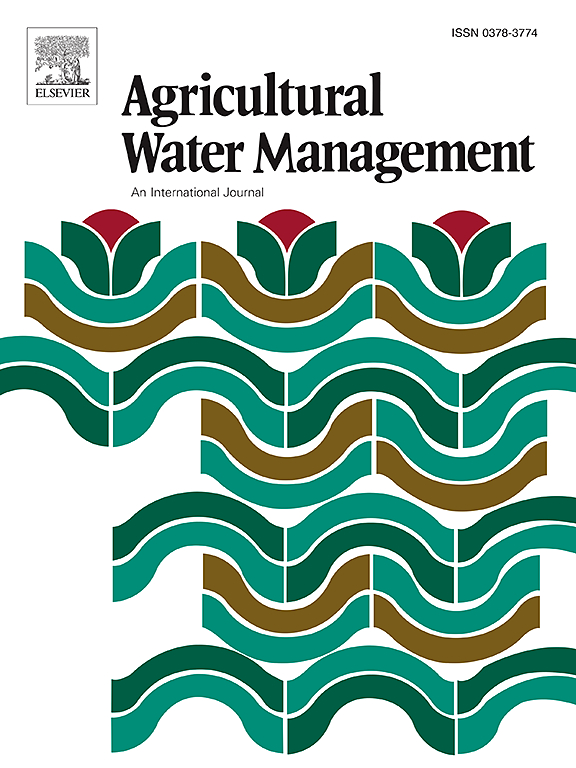Climate change impacts on spatiotemporal variability of soybean water demands in North China Plain
IF 5.9
1区 农林科学
Q1 AGRONOMY
引用次数: 0
Abstract
Climate change has been acknowledged as one of the greatest challenges for agricultural production and water management globally. This study investigates the trends and spatial distribution of the water demands of soybean (Glycine max (L.) Merrill) from 1961 to 2020 in the Jing-jin-ji region of the North China Plain to reveal the effects of climate change. Climate data were collected from 179 weather stations to calculate soybean evapotranspiration (ETc) and irrigation demand using the SIMETAW (Simulation of EvapoTranspiration of Applied Water) model developed on Penman-Monteith equation with daily meteorology data. Results showed that soybean ETc during growth season decreased significantly over the last sixty years, from 435 mm yr−1 in 1961–1970–415 mm yr−1 in 2011–2020, around an average of 423 ± 20 mm yr−1. Effective rainfall during the growth period increased by + 0.5 mm yr−1 rate, while irrigation demand declined by −0.9 mm yr−1. Rainfall during growth seasons from May to September supplied about 92 % of the water demand for soybean, higher than winter crops. The spatial distribution of soybean ETc showed high values in the south and low values in the north during the past six decades. The initial maximum ETc area (> 480 mm) shrank after 1961–1970, disappearing after 2000. During the last sixty years, solar radiation, wind speed and sunshine hours decreased significantly, leading to a significant decline in soybean ETc at −0.4 mm yr−1, but average daily precipitation had the most significant negative impact on ETc. The study provided spatial and temporal information needed to improve water use efficiency and increase the adaptability of soybean production to climate change. This is essential to ensure regional food security and promote sustainable agricultural development for water-stressed agricultural areas.
求助全文
约1分钟内获得全文
求助全文
来源期刊

Agricultural Water Management
农林科学-农艺学
CiteScore
12.10
自引率
14.90%
发文量
648
审稿时长
4.9 months
期刊介绍:
Agricultural Water Management publishes papers of international significance relating to the science, economics, and policy of agricultural water management. In all cases, manuscripts must address implications and provide insight regarding agricultural water management.
 求助内容:
求助内容: 应助结果提醒方式:
应助结果提醒方式:


